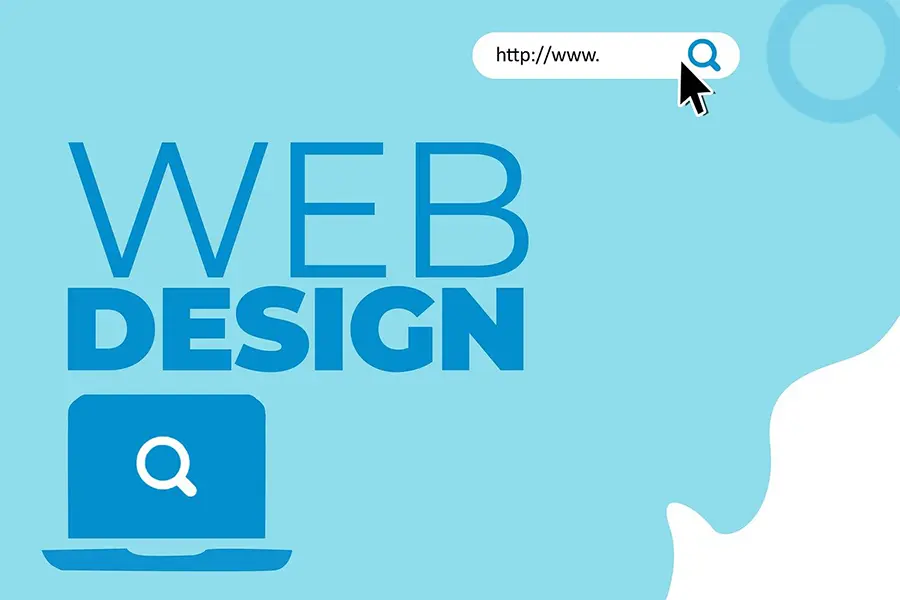30 seconds summary
- Accessible web design plays a crucial role in bridging the digital divide by ensuring that all individuals, regardless of their abilities, can access and navigate online resources. By adhering to accessibility guidelines, websites and online platforms can provide equal opportunities for people with disabilities, improving their ability to engage with education, employment, and social services.
- Online computer skills training, when designed with accessibility in mind, further empowers marginalized communities, enhancing digital literacy and helping people develop essential tech skills.
- Ultimately, accessible web design promotes inclusion and equality in the digital world.
In the modern world, the internet plays an integral role in nearly every aspect of life, from communication and education to business and healthcare. As the digital age continues to evolve, the necessity of ensuring that every individual, regardless of ability, has the opportunity to engage with online content becomes paramount. However, there remains a significant disparity in access to online resources, particularly among people with disabilities. The digital divide—a gap in access to technology and the internet—has become a critical issue that impacts the way people engage with the world around them. This divide is not only economic but also affects people based on physical, cognitive, and sensory challenges.
One of the most effective ways to address this gap is through accessible web design. By creating websites and online platforms that are inclusive and easy to use for everyone, we can ensure that more people have equal access to the opportunities the internet provides. Accessible web design not only benefits individuals with disabilities but also promotes an inclusive and equitable digital society. This paper explores how accessible web design can bridge the digital divide, with a particular focus on how online computer skills training can play a crucial role in making digital literacy more inclusive.
Understanding the Digital Divide
The term “digital divide” refers to the gap between those who have easy access to digital technologies (such as computers, the internet, and smartphones) and those who do not. This divide is influenced by several factors, including socioeconomic status, geographic location, education level, and, crucially, the presence of disabilities. People with physical, cognitive, and sensory impairments often face significant barriers when it comes to accessing digital content and services.
People with visual impairments, for example, may struggle to navigate websites that are not designed with screen readers in mind. Similarly, individuals with hearing impairments may find it difficult to access audio content that lacks subtitles or transcripts. Those with cognitive disabilities might face challenges interacting with websites that are overly complex or difficult to understand.
The digital divide also disproportionately affects marginalized communities, including low-income individuals, elderly people, and people living in rural areas. These groups may have limited access to technology due to cost or lack of infrastructure. Furthermore, they may face barriers in terms of digital literacy, meaning they may not possess the necessary skills to use digital tools effectively.
The Importance of Accessible Web Design
Accessible web design is the practice of creating websites and digital content that can be used by as many people as possible, regardless of their physical abilities or limitations. This can be achieved by adhering to a set of principles and guidelines that prioritize usability and inclusivity. Accessible web design benefits everyone, not just those with disabilities. For instance, simple, clear, and well-structured websites are easier for all users to navigate, including those who may not be particularly tech-savvy.
The World Wide Web Consortium (W3C), through its Web Accessibility Initiative (WAI), has developed the Web Content Accessibility Guidelines (WCAG) to help designers and developers create accessible web content. These guidelines cover a range of factors, such as text readability, color contrast, navigation ease, and compatibility with assistive technologies like screen readers.
There are several key benefits to incorporating accessible web design
- Equal Access to Information: Accessible web design ensures that all individuals, regardless of their abilities, have the same opportunity to access information online. This is especially important in a world where education, employment, healthcare, and social interaction are increasingly mediated through the internet.
- Improved User Experience: Websites that are designed with accessibility in mind tend to be more user-friendly for everyone. For example, adding alt text to images, ensuring that video content is accompanied by captions, and providing clear and consistent navigation can make a website easier to use for individuals with a wide range of abilities.
- Legal Compliance: Many countries have laws and regulations that mandate accessibility standards for websites. For instance, the Americans with Disabilities Act (ADA) in the United States requires businesses and organizations to ensure that their digital content is accessible to people with disabilities. Failure to comply with these regulations can result in legal consequences.
- Social Responsibility: Accessible web design is not just about compliance or technical specifications; it is a matter of social responsibility. Creating digital spaces that are accessible to all individuals is a way of promoting inclusion and ensuring that everyone has equal access to the benefits of the digital world.
- Market Expansion: Designing accessible websites also makes good business sense. By ensuring that your website can be used by people with disabilities, you are opening up your products or services to a wider audience. This can increase customer satisfaction and loyalty while boosting your brand reputation.
The Role of Online Computer Skills Training in Bridging the Digital Divide
Online computer skills training plays a critical role in addressing the digital divide by helping individuals develop the necessary skills to use technology effectively. Many people, particularly those from disadvantaged backgrounds or older generations, may not have had the opportunity to develop basic computer skills. This lack of digital literacy can further entrench social inequalities by preventing individuals from accessing essential services, such as online education, job opportunities, or healthcare.
Accessible online computer skills training programs can help bridge this gap by providing individuals with the tools and knowledge they need to navigate the digital world. These programs can be designed to accommodate a wide range of abilities and learning styles, ensuring that people with disabilities are not left behind. For example, computer skills training can be delivered through audio-visual content with captions or sign language interpretation for people with hearing impairments. Alternatively, interactive elements such as screen readers or voice commands can be used to support individuals with visual impairments.
The accessibility of these online training programs is crucial. If the websites hosting these courses are not designed with accessibility in mind, they could inadvertently exclude those who stand to benefit the most from them. Accessible web design can ensure that online learning platforms are usable by people with various disabilities. For example, a course website that adheres to WCAG guidelines can make it easier for students with disabilities to access course materials, complete assignments, and interact with instructors and peers.
Moreover, online computer skills training has the potential to reach a vast audience, including individuals in rural or underserved areas. In many parts of the world, traditional computer training may be unavailable due to geographical or economic constraints. Online training, however, can overcome these barriers by providing remote access to educational resources. When these resources are designed to be accessible, they can empower individuals who may not have had access to formal education or training in digital skills.
Case Studies of Accessible Web Design Bridging the Digital Divide
Several initiatives around the world are already demonstrating the power of accessible web design in bridging the digital divide. For example, in the United States, organizations like the National Federation of the Blind (NFB) have worked tirelessly to advocate for accessible websites and digital services. Many government agencies and private companies have partnered with the NFB to improve the accessibility of their websites, ensuring that individuals with visual impairments can easily navigate online services.
In the field of education, there are numerous online platforms that offer accessible computer skills training for people with disabilities. Websites like GCFGlobal, which provides free educational resources on a variety of topics, including basic computer skills, are designed with accessibility in mind. These platforms feature content that is compatible with screen readers and offers alternative formats, such as audio lessons, making it easier for people with disabilities to learn at their own pace.
Another notable example is the work done by the United Nations to promote digital literacy worldwide. The UN’s “Digital Literacy for All” initiative aims to provide digital skills training to underserved populations, including people with disabilities. This initiative relies heavily on accessible web design principles to ensure that digital skills training is available to everyone, regardless of their abilities.
Conclusion
The digital divide remains one of the most pressing issues in the modern world. While access to the internet and digital technologies has transformed the way we live, work, and learn, it has also highlighted significant inequalities, particularly for people with disabilities. Accessible web design plays a pivotal role in bridging this divide by ensuring that all individuals, regardless of their abilities, can fully participate in the digital world.
By prioritizing inclusive design, we can create digital spaces that are open and usable for everyone. Online computer skills training programs, when designed with accessibility in mind, can help individuals from marginalized communities develop the digital literacy they need to thrive in the modern world. These efforts not only promote greater social inclusion but also contribute to a more equitable and connected global society.
Ultimately, accessible web design is not just a technical requirement but a moral imperative. By designing websites, online services, and educational resources that are accessible to everyone, we can ensure that the benefits of the digital age are shared by all, helping to bridge the digital divide and create a more inclusive world.





